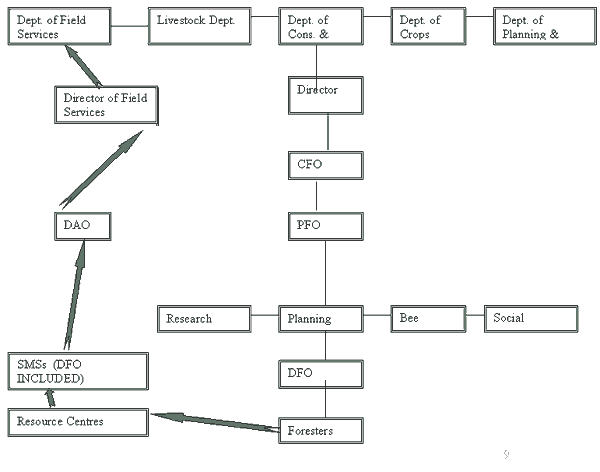


3. Evaluation and Reliability of Data Collected and Methodology Used.
3.1. Data on imports.
3.1.1. Customs and excise
Data that is collected by the Customs and Excise is submitted to the Bureau and Statistics and Ministry of Trade and Industries for further analysis. With the exception of timber for roofing and furniture, often the final product is not specified. Because of the corrupt practices of the Customs Officials often the figures are under estimated.
3.1.2. Bureau of Statistics
Bureau of statistics Office does not have a standardised format (particularly in the case of wood imports, which would indicate the type, quality, quantity and value. The only things, which are reflected, are quantity and value. According to Taka, 1999 even the available information is often out of date by four years. For example, information that was available in 1994 was from data that was collected in 1989. The table below shows revenue accrued from the sale of wood between 1994 and 1996.
Table 5: Value of wood products imported from the Republic of South Africa
|
Year |
1994 |
1995 |
1996 |
|
Value |
M134349 |
M22730 |
M21799 |
It has not been easy to convert this revenue to volume as it was the case in table one because the money that is charged by the Customs Officials is expressed as 10% of the total amount money which an individual spent on the product. There may be a standardised unit price for wood products sold in the Republic of South Africa but unfortunately but unfortunately, these are not always followed. This is why it may not be easy to express these imported items in terms of volume.
3.1.3. Locally Produced Products
With regard to the products that are produced locally, the situation is even more complex and data that is provided is in almost all cases very unreliable. In the case where the wood products come from the individually and communally owned forests no information is available. This is the situation where specific periodic studies are essential.
The collection of data regarding forest products in Lesotho has many weaknesses in that due to the decentralisation policy which the government has embarked on, foresters no longer report directly to the Chief Forestry Officer at head quarters. Instead, they report to the District Agricultural Officer who is often not a forester by either training or profession (Sekaleli, 1998).
According to the structure the DAO does not report to the CFO instead, he reports to the Director of field services who also reports to the DPS. The problem with this reporting system is that the reporting formats used by these other offices does not capture all the information required by Forestry Division. Ideally, the District Foresters are supposed to submit one copy of their monthly reports to the forestry headquarters but they hardly do it. Consequently, a lot of information gets lost. The diagram below is an illustration of the present structure and a reporting system.

Source: E.S. Sekaleli, 2000
The Planning section within the Forestry Division is supposed to collect all the data pertaining to Forestry. After compiling and analysing this data the Planning Section is supposed to distribute its report to all Heads of Sections within the Division, all relevant departments, NGOs and to the Forestry Divisionís library so that any body can access it.